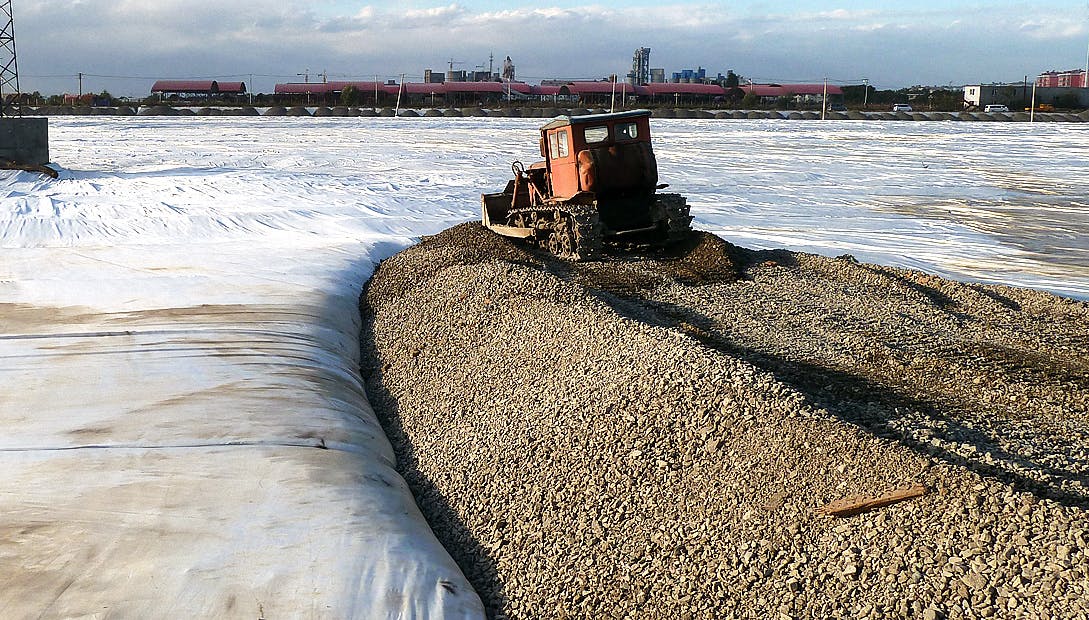
Sludge pond closure using geotextile reinforcement
Introduction:
The rising popularity of GEOTUBE® systems for dewatering mineral waste can be attributed to their efficiency, versatility, and cost-effectiveness, especially in varying ore price situations. One of their significant applications is in addressing the challenges posed by the closure of large sludge lagoons, especially in the mining industry. These lagoons can be problematic due to the low bearing capacity of the sludge.
The solution:
The use of a multi-functional geotextile reinforcement layer across sludge ponds, followed by the addition of fill material, has been a trusted method for effectively capping these lagoons.
Understanding the process:
Our guide breaks down the engineering behind this solution into six straightforward steps across three main sections:
1. Sludge details:
Understanding the undrained shear strength of the sludge is crucial. It informs the necessary solution, especially if the crust's strength is insufficient for construction loads.
Comprehensive geotechnical reports at the outset can ensure a more efficient outcome.
In-situ vane shear tests determine the sludge's undrained shear strength.
Knowing the sludge's location (above or below water) can influence the construction process.
Assessing the pHh of the sludge ensures compatibility with the polymer in the geosynthetic reinforcement layer.
2. Available site materials & resources:
Knowledge of cover material details and its placement process allows the determination of imposed loads and the potential impact on geotextile layers.
Consideration of available construction equipment, especially in remote areas, is essential.
3. Pond dimensions:
Understanding pond dimensions aids in efficient geosynthetic reinforcement layer supply.
Common techniques include using geotextile rolls or creating geotextile panels, either at the site or the factory.
Factory-made panels offer higher seam strengths.
4. Design:
This stage confirms the strength grade for the reinforcement layer.
Numerous research papers and software tools assist in the design process, considering sludge deformation and seam stresses.
5. Transportation & handling:
After determining the strength grade and required dimensions, the geotextile products are manufactured.
Safety and transportation aspects, especially given the product's weight, need careful planning.
6. Installation considerations:
Successful project execution hinges on thorough planning by both the installer and supplier.
Important steps include safe unloading near the ponds and pre-placement unfolding for geotextile panels.
Conclusion:
A successful sludge pond closure project requires in-depth knowledge of the construction process, applications, technical expertise, and superior manufacturing capabilities.
Explore more blogs
View allHow to combine engineered earth armoring with greywater treatment
Resilient water management by combining greywater recycling with engineered earth armoring for irrigation, erosion control, and increased property value.
How can geosynthetics help energy transition?
Geosynthetics accelerate agricultural outputs and improve resilience by optimizing water management through enhanced irrigation efficiency and providing structural stability to agricultural infrastructures like dams and reservoirs.
How can geosynthetics accelerate agriculture outputs and improve resilience?
Geosynthetics accelerate agricultural outputs and improve resilience by optimizing water management through enhanced irrigation efficiency and providing structural stability to agricultural infrastructures like dams and reservoirs.